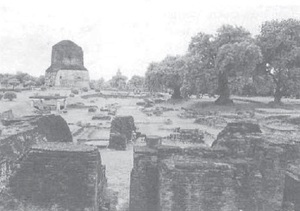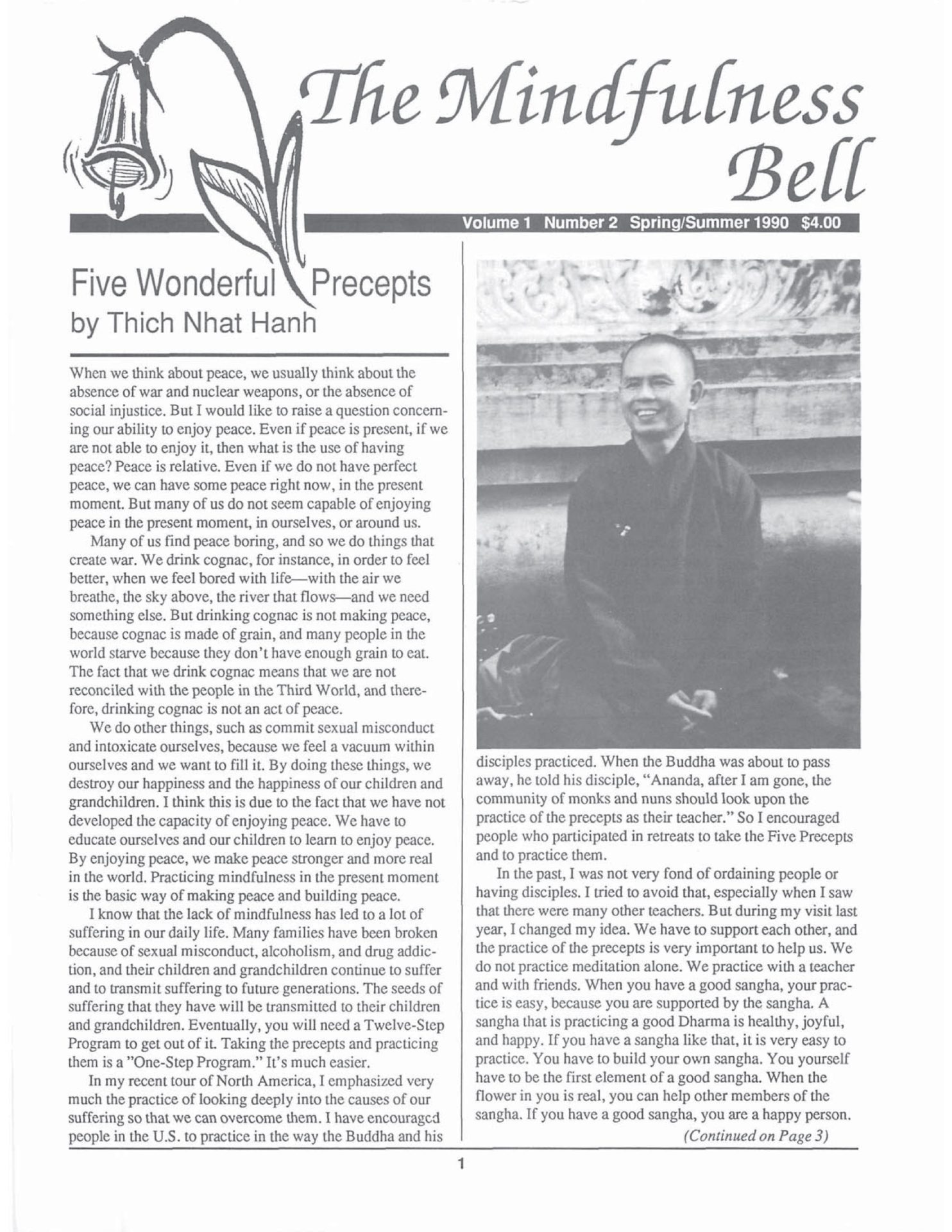By Shantum Seth
Thirty-five pilgrims from ten different countries started our month-long pilgrimage on November 3, 1988. We travelled by bus for over 750 miles through the area where Shakyamuni Buddha lived, which is now Bihar, southern Nepal, and eastern Uttar Pradesh. Each day we would wake before sunrise and go for our morning meditation to the area’s sacred site. Be tween breakfast and lunch, Thay Nhat Hanh would give a Dharma talk.
By Shantum Seth
Thirty-five pilgrims from ten different countries started our month-long pilgrimage on November 3, 1988. We travelled by bus for over 750 miles through the area where Shakyamuni Buddha lived, which is now Bihar, southern Nepal, and eastern Uttar Pradesh. Each day we would wake before sunrise and go for our morning meditation to the area's sacred site. Be tween breakfast and lunch, Thay Nhat Hanh would give a Dharma talk. All of our meals were in silence. The afternoon was spent freely. In the evening we would meet for tea meditation and spend time together as a sangha. English was the main language for communicating.
Our first stop was Sarnath, the deer park where the Buddha gave his first sermon on the subject of The FourNoble Truths. Here, Thay gave his first Dharma talk of the pilgrimage on the same subject. Next we went to Bodh Gaya, where we practiced sitting and walking meditation near the Bodhi Tree. Here, we listened to Thay's teaching on dependent co-arising , the Eightfold Path, and the practice of peace. Most of us loved the open markets of Bodh Gaya, with their noise, smells, and the highs and lows of bargaining. At the entrance of the Mahabodhi Temple there were rows of men, women, and children waiting for alms. We felt that it was important to look deeply at our reactions to this situation and had a Dharma discussion about it. In the end, we collected the money that we would have given to beggars and donated $3000 to an organization working with "untouchables" who had converted to Buddhism 30 years ago.

One day we crossed the shallow Neranjara River to Sujata's village. Sujata was the young girl who offered rice pudding to the Buddha when he collapsed after practising self-mortification. Here we had a cookie and orange juice meditation with over one hundred village children, with Thay telling the story of Sujata and Svast, the buffalo boy.
We arrived in Rajgir on November 13. This was the capital of the state of Magadha during the time of the Buddha. For four consecutive days, we visited Vulture Peak, one of Buddha's favorite spots. One morning we began walking to the peak at 5:00 a.m. to be at the site by sunrise. It was a day of ceremonies. Cao Ngoc Phuong and Annabel Laity were ordained as nuns, and Thanh Minh as a novice. Four of us took the vows of learning and practicing the fourteen precepts of the Order of Interbeing, and five of us received the Five Precepts. There was an air of celebration in the sangha afterwards.
The evening we arrived at Vaishali, I met Ram Baran Bodh, who was selling gourds at the local market. The next day, we visited his village, Bodh Tola, which has been Buddhist since the time of Shakyamuni. On the way, we rested in a mango grove, said to be the one that the courtesan Amrapali had presented to the Buddha. At the village we shared songs and recited the Three Refuges together. The next morning we set off from Vaishali. The Buddha walked from Vaishali to Kushinagar (about 120 miles) en route to Lumbini, where he planned to die. He got no further than Kushinagar, where he lay down between two sal trees and, facing the sunset, attained Maha Parinirvana.
On November 25 we went to Nepal, the birthplace of Prince Gautama. From there, we could see the snow clad mountains of the Himalayas. Sunrise and sunset brought spectacular displays in the sky. In the early morning, boys and girls of the village went with sickles in their hands to cut grass for their cows and buffaloes. After breakfast we would sit under a peepul tree and listen to stories of the Buddha's birth and early life.
Next we went to Sravasti, where the Buddha held retreats in the Jetavana Park. The park was presented to him by the merchant Anathapindika. It was here that he delivered the Anapanasati Sutra on the full awareness of breathing and the Satipatthana Sutra on the four establishments of mindfulness, and where Angulimala, the dreaded murderer who wore a garland of his victims' fingers around his neck, converted to Buddhism. At Gandhakuti, the house where the Buddha lived, we held our closing ceremony, offering gifts of insight poems, songs, prayers, and smiles to the sangha. We all had made an attempt to dress up for the occasion, and it was a joy to watch everyone give offerings. Our sangha had become a family. I enjoyed the organizational challenges in my role as the local guide. I felt grateful for being able to walk in the footsteps of the Buddha, to be with Thay in this wonderful land he loves so much, and to know the Buddha within each member of the group.
Following this successful pilgrimage, we will be organizing another from December 2-19, 1990. Mobi Ho, storyteller and student of Thay, will accompany the group and tell stories of the Buddha's life. She just finished the translation into English of Old Path White Clouds, Thay' s biography of the Buddha. For further information, write to Mobi Ho, 318 Eleanor Avenue, San Antonio, TX 78209 (phone 512-826-4251) for a brochure, or contact me at 8 Rajaji Marg, New Delhi 110011, India (phone 301-5467; fax 332-3676). -S.S

